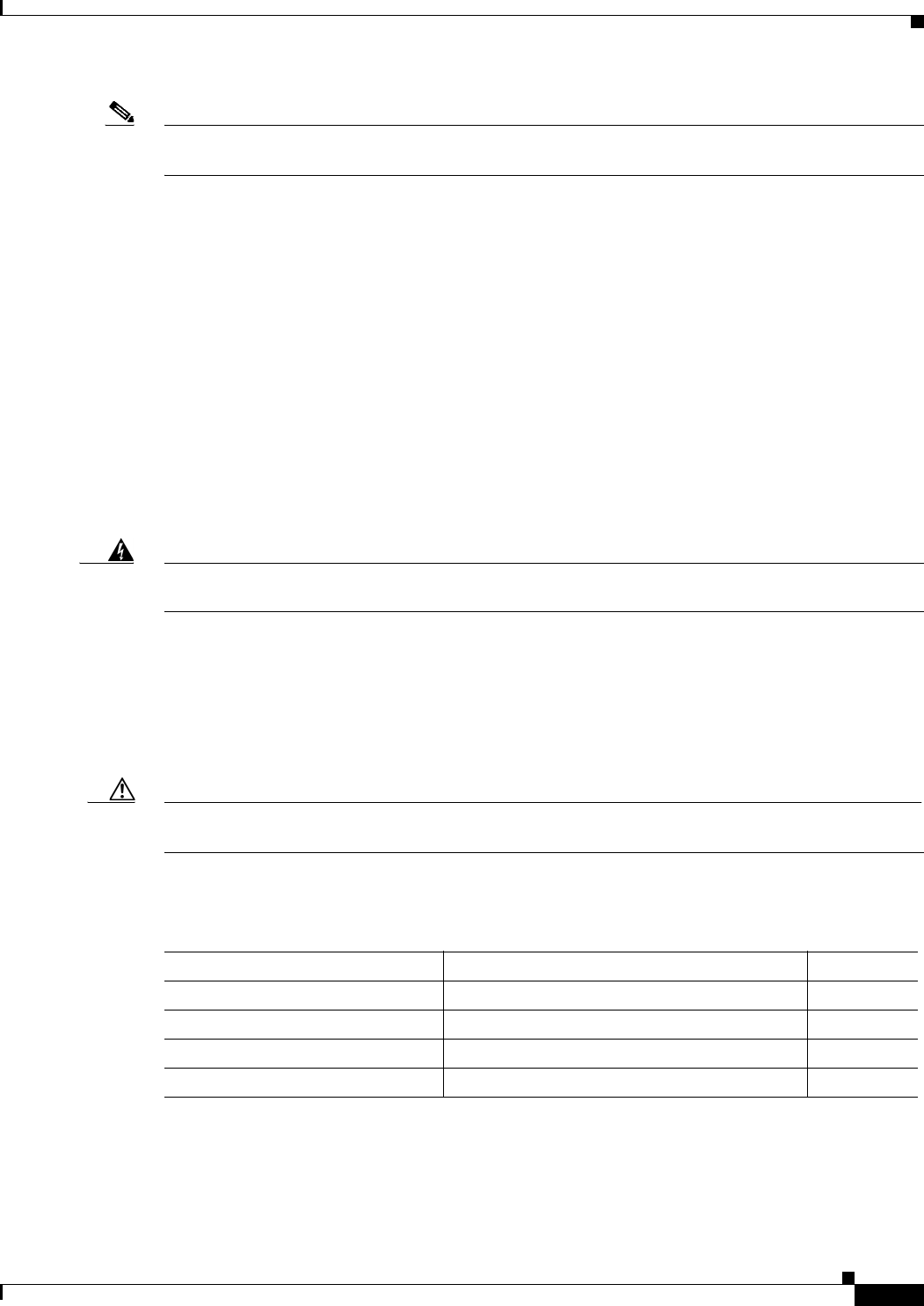
1-7
Cisco Aironet 1520 Series Outdoor Mesh Access Point Hardware Installation Guide
OL-12632-03
Chapter 1 Overview
Hardware Features
Note The 4.9-GHz band requires a license and can only be used by qualified public safety operators as defined
in section 90.20 of the FCC rules.
The 2.4-GHz radio supports two or three antennas for single-input, multiple-output (SIMO) operation.
The access point uses two or three receivers to support maximum ratio combining (MRC) to enhance
receiver performance. MRC is a technique that combines the signals from multiple receivers in a
manner to optimize the received signal strength. MRC can provide up to 3 dB of increased receive signal
strength with two receive antennas or up to 5 dB with three antennas.
External Antennas
The access point supports up to three N-type radio frequency (RF) antenna connectors on the top of the
unit and two on the bottom of the unit. The number of active antenna connectors depends upon the access
point configuration (see Antenna Connector Locations, page 1-5). All access point configurations
supports multiple 2.4-GHz antennas for MISO operation, but only one 5-GHz antenna.
When using the optional Cisco compact omnidirectional antennas, the 2.4- and 5-GHz antennas connect
directly to the access point. The Cisco omnidirectional antennas use vertical polarization.
Warning
Only trained and qualified personnel should be allowed to install, replace, or service this equipment.
Statement 1030
The access point has been designed to operate with the antennas listed below and with a maximum gain
of 8 dBi for 2.4 GHz and 17 dBi for 5 GHz. Antennas not in this list or with a higher gain are strictly
prohibited for use with the access point. The required antenna impedance is 50 ohms.
To reduce potential radio interference to other users, the antenna type and its gain should be chosen so
that the equivalent isotropically radiated power (E.I.R.P.) is not more than required for successful
communication.
Caution For directly mounted antennas, you must not add weatherproofing around the antenna connectors
because the antenna drain holes might be blocked and damage the antenna.
Table 1-2 and Table 1-3 list the supported external antennas for the access point.
Table 1-2 External 5-GHz Antennas
Part Number Model
1
1. Operation in the 4.9-GHz band requires a license and may be used only by qualified Public Safety operators as defined in
section 90.20 of the FCC rules.
Gain (dBi)
AIR-ANT5180V-N 5-GHz compact omnidirectional 8
AIR-ANT58G10SSA-N 5-GHz sector 9.5
AIR-ANT5114P-N 5-GHz patch 14
AIR-ANT5117S-N 5-GHz 90-degree sector 17
















